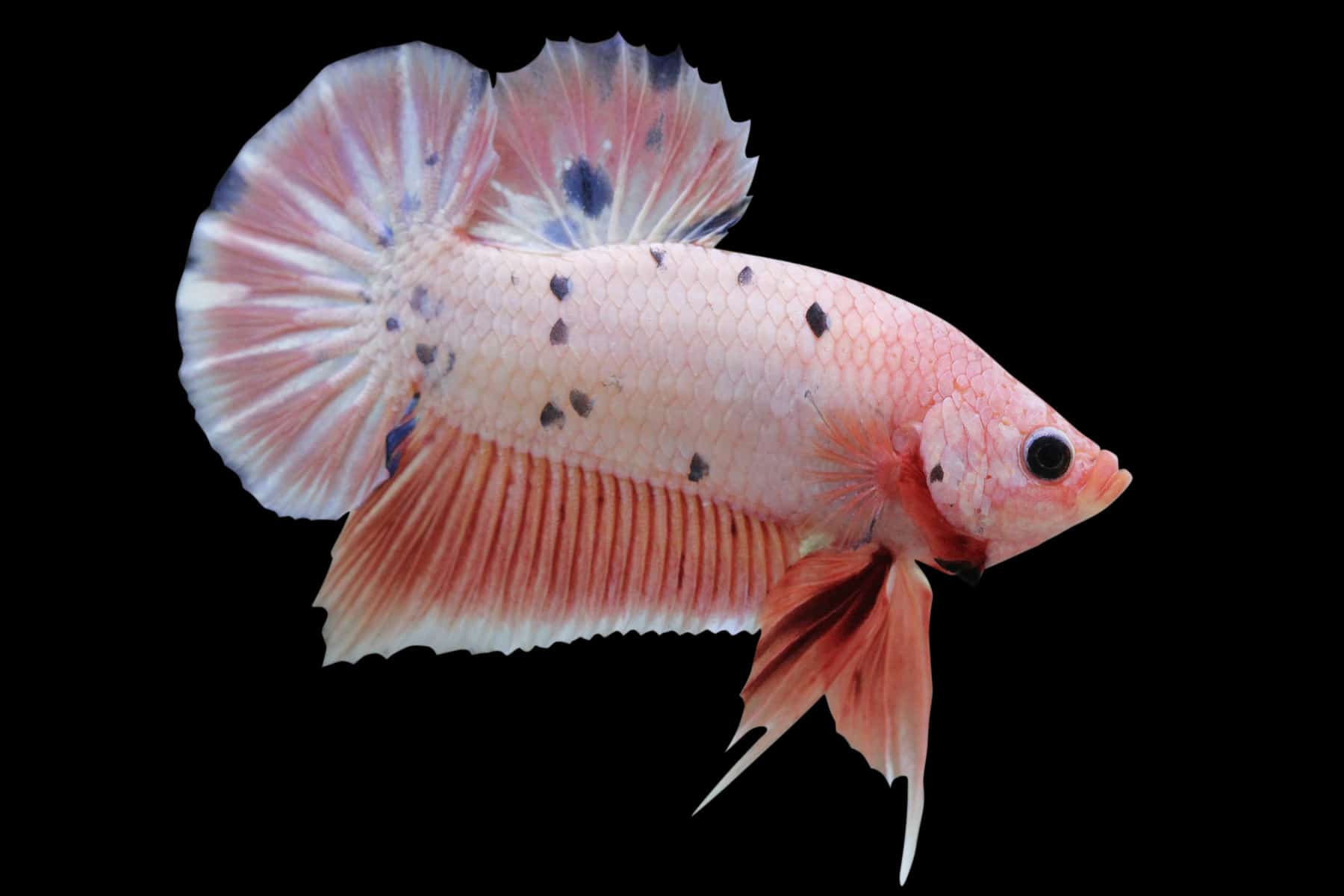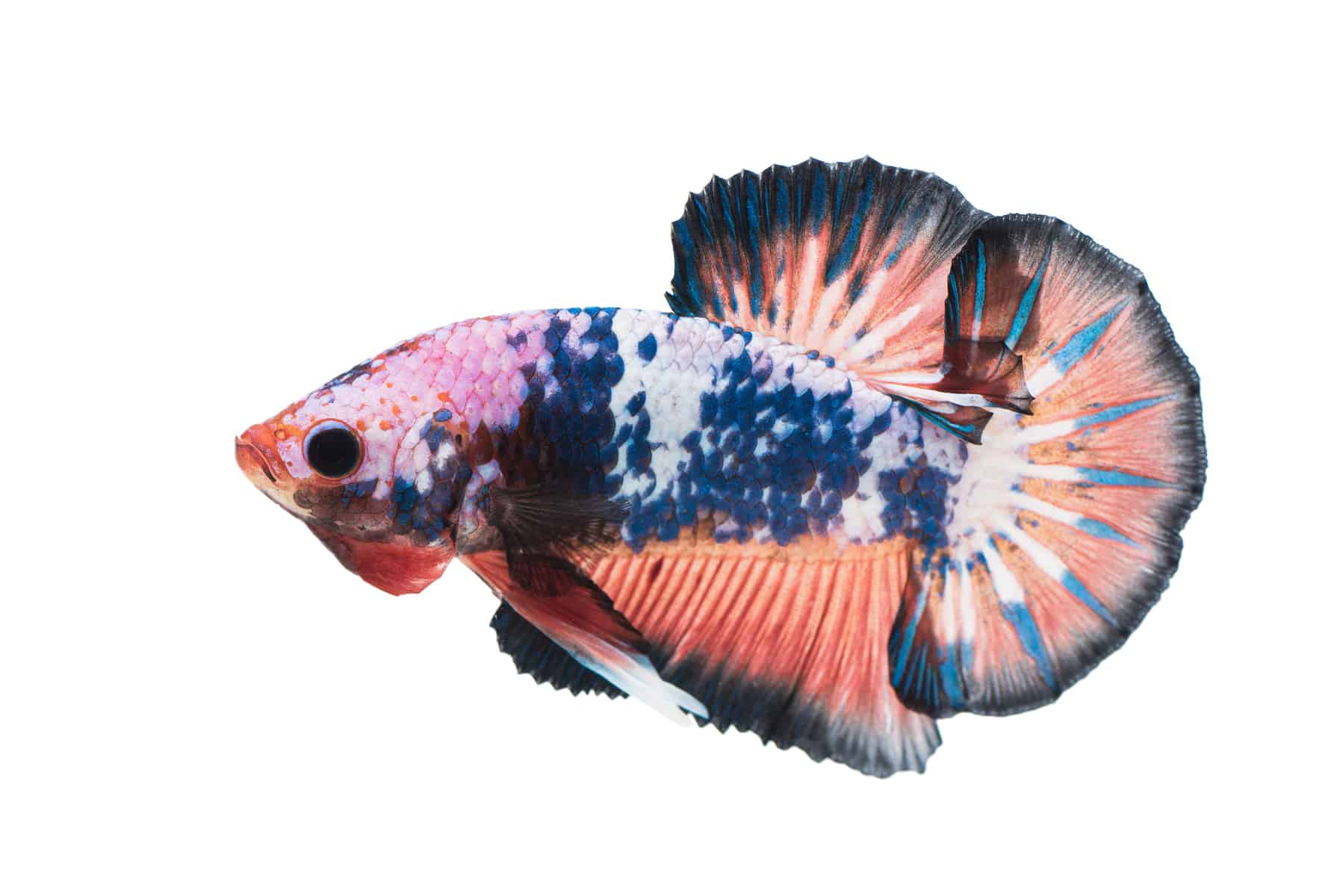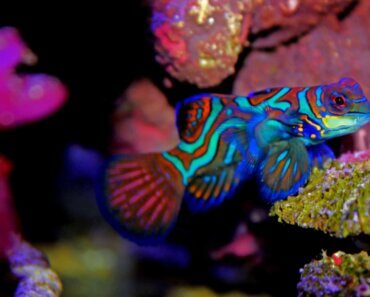Most hobbyists are familiar with betta fish, also sometimes known as Siamese Fighting Fish or Japanese Fighting Fish. These brilliantly colored fish with their amazing flowing fins and tails are often the species that first gets fishkeepers interested in taking up the hobby in the first place. Indeed, many of those early enthusiasts subsequently go on to breed betta fish, and betta genetics has grown into something of a niche science with a following all of its own.
You can learn everything you need to know about how to care for betta fish in the detailed guide that you will find at this link on our site.
However, in this article, we introduce the Plakat betta and take a look at the darker side of this glittering, vibrant fish’s personality.
What is a Plakat betta?
Plakat bettas are native to the Mekon basin of Cambodia, Vietnam, and Thailand, but are most densely concentrated in the Chao Phraya River in Thailand.
Bettas live in slow-moving water, typically rice paddies, floodplains, marshes, and ditches. During the dry season, the fish sometimes finish up living in puddles. As well as gills, betta fish have a labyrinth organ, which enables them to breathe atmospheric air in oxygen-depleted water, allowing the fish to survive in this challenging environment.
Also, bettas have evolved to become impressive jumpers and can leap from one puddle to another in search of food, to avoid other males, and to find mates. Tank-kept fish also jump, so do be sure to choose a tank with a tightly fitting lid!
Wild Plakat bettas grow to around 2.8 inches in length. Although the aquarium specimens that you see in fish stores have long flowing fins and brilliant colors, their wild cousins are generally grey, brown and green with short fins. Wild Plakats only exhibit vibrant colors when they are agitated or threatened, and the bright colors and spectacular finnage that you see in captive-bred fish are the results of selective breeding.
Bettas live on water-bound insects and insect larvae that they take from the water surface.
Wild Plakats are classified by the IUCN as vulnerable. The main threat to bettas is the destruction of their habitat, as farmlands expand across central areas of Thailand, as well as pollution.
Fighting fish
Thailand was formerly known as Siam, hence the fish’s common name, although that’s only half the story.
Male betta fish are naturally very aggressive toward other males, fighting to the death to protect their territory. For that reason, you can NEVER keep two male betta fish in the same tank.
Plakats are descended from the original Siamese betta fish that were pitted against each other in fights, and even the word “Plakat” means “biting fish.” Owners and onlookers would place wagers on the fights, and much money changed hands. So, these fish were not prized for their beauty but rather for their fighting ability.
It’s thought that Indigenous Thai people kept Plakats for over 700 years. Official reports of fights first appeared in the 1800s when the King of what was then Siam licensed betta fights, as well as being an owner himself. In the 1840s, the King of Siam gifted the Theodor Cantor, a zoologist from Denmark, a few of his best fighting specimens, which Cantor christened Macropodus Pugnax.
The fish was later renamed Betta splendens by Charles Tate Regan, a U.S. ichthyologist, and that’s the name by which the modern fish are known. However, even that name reflects the species’ fighting history, being named for the Ikan Bettah people of Asia who were reputed to be fearless warriors.

Modern fighters
Even these days, fighting male Plakat bettas is a serious business in Thailand.
However, elsewhere in the world, the practice is frowned upon. For example, in the UK, you would be fined and banned for keeping fish, as you would be in violation of the Animal Welfare Act.
However, in Thailand, although there is a restriction of fighting fish, that is more with the aim of restricting unregulated gambling than from an animal welfare perspective. So, currently, you are permitted to fight fish, although you are not allowed to place money on the outcome of the bouts. Also, contests still take place in Malaysia, Cambodia, and Vietnam.
In Thailand, fighting Plakats are known as Morh. Longer-finned, decorative specimens that are kept as pets are called Cheen, which translates as “Fighting Fish from China.” Plakat Morh has been bred over the centuries to be bigger and stronger than their pond-dwelling relatives. Morh have short fins that are less vulnerable to injury, their strong, oversized jaw and stocky bodies make them extra-powerful, and a muscular caudal attachment point can be used to rain down blows on their opponent.
Different forms of Plakats
There are different forms of fighting Plakat Mohr to be found in Thailand, and they are bred to create distinct fighting characteristics. Sometimes, you will encounter Plakat Luk Morh, which means Plakats from earthenware, referring to how the fish are kept.
Color tends to be less of a factor when breeding Plakats for fighting. Other considerations take precedence, including bloodlines and different “families” of fish.
Plakats are categorized by their fighting style. Terms, such as “strong mouth,” “good skin,” and “force bite” are used. The nature of the fish’s fighting focus is recorded as “fins,” “stomach,” “face,” “ear,” etc. Even factors, such as stamina and teeth types, are taken into account.
Fighting Plakats with a good history can sell for as much as $65, so breeding a good fighting specimen from the right ancestry can be a very lucrative occupation indeed.
There are several different forms of Plakats:
Plachon (snake-fish or long-body)
Plachon Plackats are noted as having long, narrow bodies and being extremely aggressive and super-fast with very sharp bites. These fish are able to mount several rapid attacks simultaneously and are the most common fighting fish in Thailand.
Plamor
Plamor Plackats have a short body shape and head, and they are considered to be slower than Plachons but just as tough.
Plakrai (Spoon-head)
These Plakats are extremely fast with a sharp, curved mouth, a long body, and a strong bite. These bettas are known for their deadly aim.
Plasang
Plasang Plakats are often smaller than other types, being a hybrid of the wild and line-bred fish.
Different styles of combat are noted, too, including turn-back hits, persistent hits, and double hits.
If a fighting Plakat loses a competitive bout but survives, he may be kept as a pet, released back into the wild, or if he displayed potential, he could be used for breeding. Some unsuccessful fighters are even put in water tanks to assist their owners by eating the larvae of midges and mosquitoes.
Other betta fish that you’ll see appearing at bouts include Plakat Pah, meaning Plakats from the jungle, and generally refers to the usually peaceful betta imbellis. You might also see Plakat Thung, meaning Plakats from flooded regions.
Culture shock
Plakat bettas have been bred in Thailand for hundreds of years as part of the country’s culture, and the sport doesn’t come with the same stigma that it carries elsewhere in the world.
Plakats bred in the U.S. are produced to create beauty and amazing form. Their fighting abilities are not important; however, you must remember that these fish have been crossbred multiple times across the years, and all of them originate from the Thai fighters. So, always bear that in mind when you buy a Plakat that, although he may be stunning to look at, he could also pack a heck of a punch!
Caring for Plakat bettas
So, caring for a Plakat betta is actually pretty straightforward, as long as you give him the correct diet and water parameters.
As previously mentioned, you can read a full, detailed guide to caring for the betta fish elsewhere on our site at this link. But here’s a quick overview so that you can see whether one of these aquatic gems would make a good pet for you.
Tank size
Although Plakat bettas only grow to between two and three inches in length and are not especially fast or active swimmers, they should not be kept in jars, vases, or bowls. That flies in the face of popular opinion but is nonetheless a fact.
For the long-term health of your Plakat, he should be kept in a proper aquarium that has filtration and heating.
If you plan on keeping your fish on his own, a small tank of around two to five gallons is fine. However, in the wild, bettas adopt territories of around three square feet, so a larger tank is good too.
These fish live in the top part of the water column, so a tank that’s long and shallow is preferable, as it will provide the fish with plenty of space and a maximum water surface area.
Planting and decoration
Bettas like to have somewhere to rest, so including some broad-leaved plants in your setup is a good idea. Also, you can provide driftwood, caves, and floating plants so that these retiring fish have somewhere sheltered to hide.
Bettas are labyrinth breathers and surface feeders, so be sure to leave plenty of surface area free so that the fish can access it when necessary.
Tankmates
Plakat bettas are bred to fight. Therefore, you must NEVER keep two male bettas together! That will surely result in injuries and probably the death of one or both of the fish.
However, bettas are generally peaceful with other species and will live happily in a community of bottom-dwelling fish, such as Corydoras catfish. Plakats tend to spend most of their time in the upper area of the water column, so they will mix happily with fish that live elsewhere in the tank.
Invertebrates are generally accepted, too, provided that they are too large to be considered as prey.
Although you can’t keep two male Plakats together, you can keep a small sorority of females, as long as you provide them with lots of space and good cover. One male and several females will also work, but sometimes the male may become aggressive during spawning.
Diet and nutrition
Plakats are carnivorous and are pretty easy to feed, preferring a variety of freeze-dried, frozen, and live foods.
As a general rule of thumb, the more variety you provide for your betta, the healthier he will be, and the more vibrant his colors. So, feed your Plakat flakes, tablets, brine shrimp, daphnia, and bloodworms.
Water conditions
Plakat bettas are tropical freshwater fish that need a water temperature of between 720 and 820 Fahrenheit.
The water pH should be in the range of 6.0 to 7.5 with a water hardness of between 2 and 12 dKH.
It’s important to avoid rapid fluctuations in water temperature as that can stress the fish, which in turn can leave him susceptible to health problems.
As previously mentioned, you must have a mechanical and biological filtration system in place in your pet’s tank. Also, you will need to carry out partial water changes of around 25% at least once a week. If levels of ammonia and nitrates become too high, your fish will become sick and potentially die.
Wild Plakats live in slow-moving water with little or no current. These fish are not strong swimmers, so you’ll need to buffer the filter flow with plants or decorations or adjust the pump so that the flow is not too powerful.
FAQ
In this section of our guide, we answer a few questions that are commonly asked by people who are considering taking on one of these gorgeous, characterful fish.
Q: Are Plakat bettas more aggressive?
A: Yes. Plakat bettas were originally bred to fight in competitive bouts, and that trait remains prevalent in the modern fish. Plakats tend to be more aggressive than the long-finned, ornamental betta splendens variety.
Q: How can you tell a Plakat betta?
A: Plakat bettas have a short, stocky body with short fins, whereas betta splendens have long, flowing fins. Modern Plakats have been bred to exhibit bright, varied colors, including marbles and metallics.
Q: What is a Nemo Koi Betta?
A: Nemo Koi bettas are Plakats that boast a variable mix of colors, oven displaying five or more colors on one fish! Colors can include orange, red, yellow, gold, blue, black, and white. Every fish is unique, and its price generally reflects that.
Q: How big do giant bettas get?
A: Giant bettas generally grow to around four inches in length.

Final thoughts
The Plakat betta comes from Thailand, where the wild fish live in the slow-moving water of rice paddies, canals, and shallow streams.
For hundreds of years, Plakat bettas have been bred for the controversial but traditional Thai sport of fish-fighting. For that reason, modern Plakats are more aggressive than other varieties of the species. That said, bettas can be peaceful community fish, as long as you don’t put two males in one tank.
Plakats are easy to care for and beautiful to look at, making them a great choice of fish for the beginner aquarist.


























